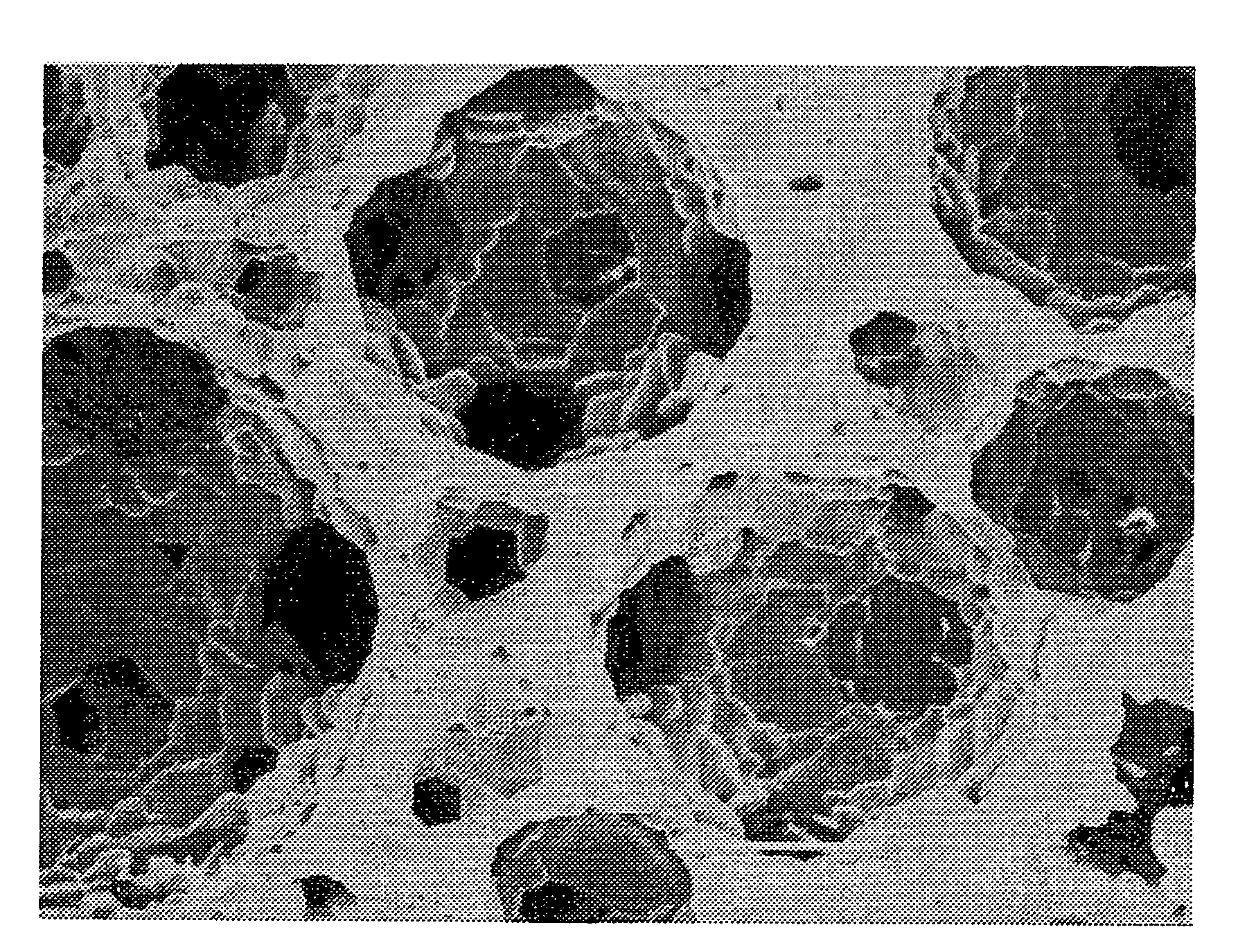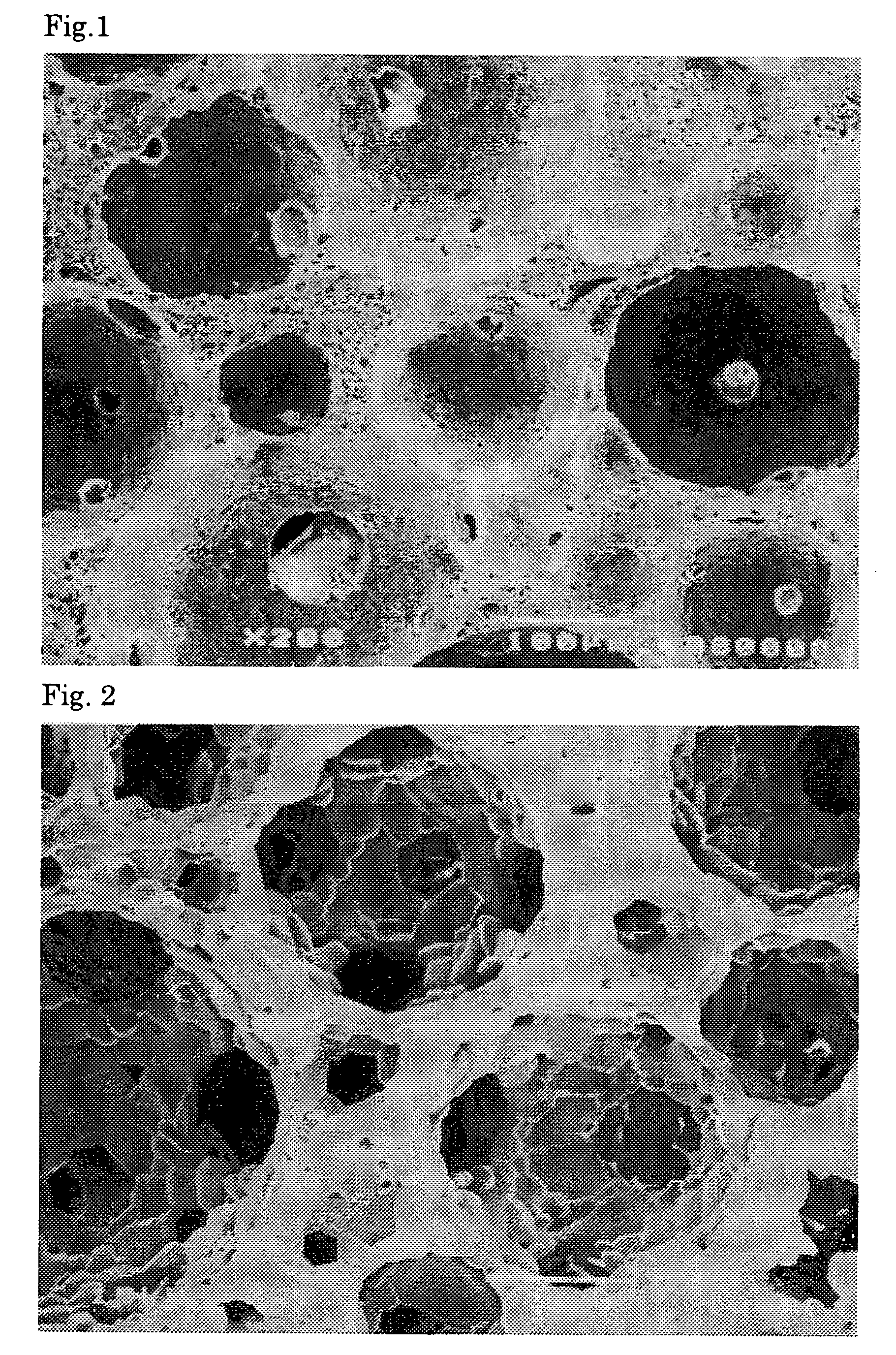Production method for ceramic porous material
a production method and porous material technology, applied in the field of ceramic porous materials, can solve the problems of low mechanical strength, poor transmissivity, and generation of dust (particles), and achieve the effects of high porosity, excellent transmissivity, and high strength
- Summary
- Abstract
- Description
- Claims
- Application Information
AI Technical Summary
Benefits of technology
Problems solved by technology
Method used
Image
Examples
examples 6 to 10
[0047]First, with reference to the examples 1 to 5, 5 compact pieces were produced with different porosities in the substantially same manner therewith. The compacts were temporarily baked so as to obtain columnar-shaped compacts. After the elimination process by permeation with the silicon carbide slurry, they were made to have the same porosity.
[0048]Next, in the same manner as in the examples 1 to 5, the temporarily baked products were fired for providing the fired products so as to obtain 5 pieces of alumina ceramic porous materials of a 60% porosity.
[0049]The porosity of the obtained alumina ceramic porous materials, the existence or absence of the abnormal part, the pressure loss and the time to the particle number zero count were measured in the same manner as in the examples 1 to 5. Results are shown in the table 2 together with those of the comparative example 1.
[0050]
TABLE 2time to theparticleexistence ornumberabsence ofcondensationpressurezeroporositythe abnormalstrengthl...
example 16
[0064]First, the alumina ceramic porous material of the comparative example 1 was processed into a rectangular parallelepiped-like shape of a 1 cm square and a 10 cm length. A slurry with a sodium borate powder dispersed by 30% in an acetone was poured thereon for introducing the sodium borate slurry into the cells of the alumina ceramic porous material.
[0065]Next, after dying the acetone, it was introduced into a furnace kept at 1,000° C. for fusing the sodium borate. After maintaining the same in the furnace for 10 minutes, it was taken out from the furnace and cooled down in the air. Then, it was boiled in a diluted hydrochloric acid for 2 hours for dissolving and eliminating the sodium borate so as to obtain an alumina ceramic porous material.
[0066]The porosity, the existence or absence of the abnormal part, the condensation strength, the pressure loss and the time to the particle number zero count were measured as in the examples 1 to 5. Results are shown in the table 4 togethe...
examples 17 , 18
EXAMPLES 17, 18
[0069]The temporarily baked product of the comparative example 1 and the fired product of the comparative example 1 were fired or re-fired at 1,900° C. in a hydrogen gas atmosphere for 5 hours for providing a baked product or a re-baked product so as to obtain an alumina ceramic porous material, respectively. The crystal particles of both of the obtained ceramic porous materials had grain growth to about 20 μm. Moreover, the porosity, the existence or absence of the abnormal part, the condensation strength, the pressure loss and the time to the particle number zero count were measured as in the examples 1 to 5. Results are shown in the table 5 together with those of the comparative example 1.
[0070]
TABLE 5time to theparticleexistence ornumberabsence ofcondensationpressurezeroporositythe abnormalstrengthlosscount(%)part(MPa)(KPa)(minute)example 1760Absent4000.10.1example 1860Absent4000.10.1Comparative60Exist300160example 1
[0071]As it is shown in the table 5, by denaturi...
PUM
| Property | Measurement | Unit |
|---|---|---|
| porosity | aaaaa | aaaaa |
| porosity | aaaaa | aaaaa |
| temperature | aaaaa | aaaaa |
Abstract
Description
Claims
Application Information
 Login to View More
Login to View More - R&D
- Intellectual Property
- Life Sciences
- Materials
- Tech Scout
- Unparalleled Data Quality
- Higher Quality Content
- 60% Fewer Hallucinations
Browse by: Latest US Patents, China's latest patents, Technical Efficacy Thesaurus, Application Domain, Technology Topic, Popular Technical Reports.
© 2025 PatSnap. All rights reserved.Legal|Privacy policy|Modern Slavery Act Transparency Statement|Sitemap|About US| Contact US: help@patsnap.com


